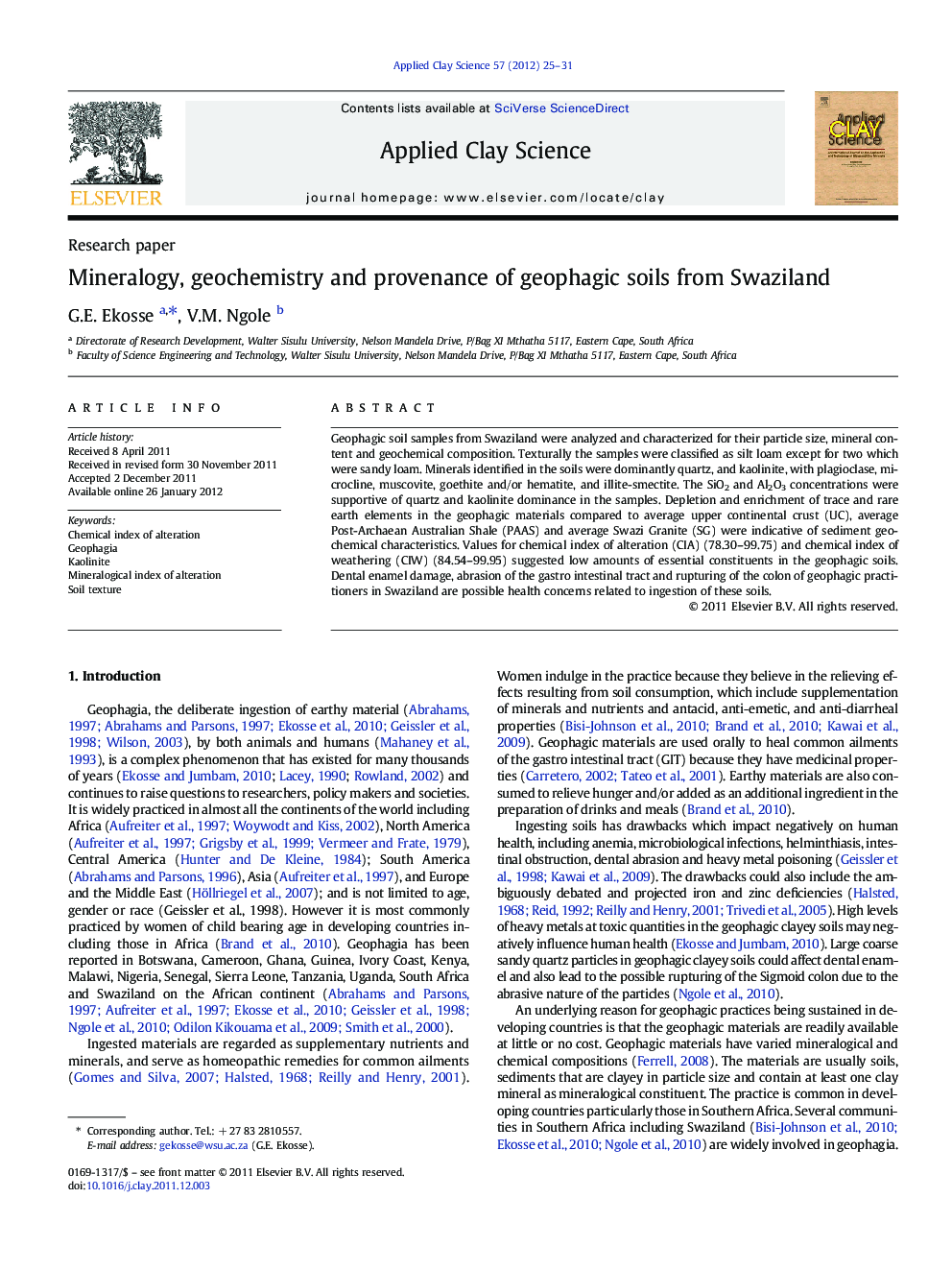| Article ID | Journal | Published Year | Pages | File Type |
|---|---|---|---|---|
| 1695320 | Applied Clay Science | 2012 | 7 Pages |
Geophagic soil samples from Swaziland were analyzed and characterized for their particle size, mineral content and geochemical composition. Texturally the samples were classified as silt loam except for two which were sandy loam. Minerals identified in the soils were dominantly quartz, and kaolinite, with plagioclase, microcline, muscovite, goethite and/or hematite, and illite-smectite. The SiO2 and Al2O3 concentrations were supportive of quartz and kaolinite dominance in the samples. Depletion and enrichment of trace and rare earth elements in the geophagic materials compared to average upper continental crust (UC), average Post-Archaean Australian Shale (PAAS) and average Swazi Granite (SG) were indicative of sediment geochemical characteristics. Values for chemical index of alteration (CIA) (78.30–99.75) and chemical index of weathering (CIW) (84.54–99.95) suggested low amounts of essential constituents in the geophagic soils. Dental enamel damage, abrasion of the gastro intestinal tract and rupturing of the colon of geophagic practitioners in Swaziland are possible health concerns related to ingestion of these soils.
► Geophagic soils. ► Kaolinite and quartz dominant. ► Sediment source inferred.
